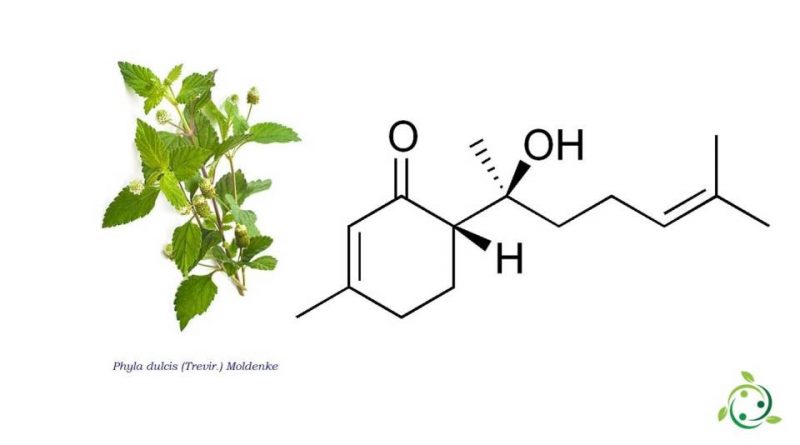Hernandulcin
Hernandulcin
Hernandulcin, whose term in the official IPAC nomenclature is: (6S) -6 – [(2S) -2-hydroxy-6-methylept-5-en-2-yl] -3-methylcyclohex-2-en-1 -one is a sesquiterpene with a brute chemical formula: C15H24O2.
Hernandulcin is an intensely sweet chemical compound obtained from the Phyla dulcis (Phyla dulcis (Trevir.) Moldenke) plant of Mexican and South American origin.
The history of Hernandulcin is linked to the discovery, in 1570, by the Spanish doctor Francisco Hernández who described an extraordinarily sweet plant known to the Aztecs as Tzonpelic xihuitl, which means “sweet herb”. This reference, accompanied by an accurate description and illustration of the plant, led a group of pharmacognocysts to a previously unrecognized and intensely sweet chemical in 1985.
Cesar M. Compadre and A. Douglas Kinghorn, of the University of Illinois at Chicago, isolated and identified the sweet compound from the leaves and flowers of the Phyla dulcis plant in Mexico. The researchers noted the chemical structure of the colorless oil and named it Hernandulcin in honor of Francisco Hernandez.
Hernadulcin contains three groups that produce the intense sweet taste: the carbonyl group, the hydroxyl group and the hydrophobic side chain.
Hernandulcin was the first sesquiterpene discovered with sweet characteristics.
A group of volunteers tasted hernandulcin and was determined to be more than 1,000 times sweeter than sugar. Hernandulcin also has a minty aftertaste and does not cause tooth decay, which would make it a good substance for oral hygiene products.
Warning: The information shown is not medical advice and may not be accurate. The contents are for illustrative purposes only and do not replace medical advice.

